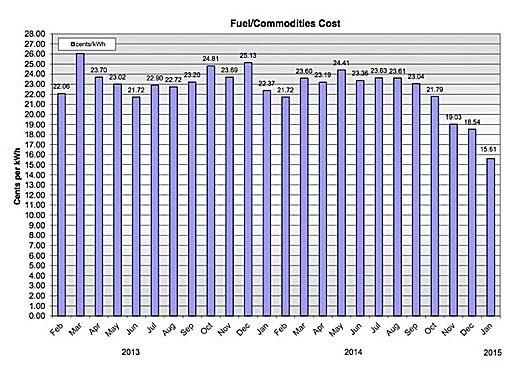SUBHEAD: KIUC's Schedule Q program is being adopted by the state and hampers renewable energy and stunts growth of home PV systems.
[IB Publisher's note: This article was updated on 3/16/2015.]
By Sonja on 11 March 2015 for ViableEnergy.org -
(http://viable-energy.org/2015/03/schedule-q-kiuc-hampers-renewables-and-stunts-pv-growth/)

Image above: The Night Stalker, a nocturnal hunter evolved from vampire bats. Blind, it seeks independent electromagnetic fields to find its prey, which it then stuns it with powerful screams for more money. Image by Dixon (1981) in "After Man: a Zoology of the Future" by Steven M. Carr. From (http://www.mun.ca/biology/scarr/Night_Stalker.htm).
Here is the US department of Energy’s DSIRE database’s page on net-metering on Hawaii.
.
[IB Publisher's note: This article was updated on 3/16/2015.]
By Sonja on 11 March 2015 for ViableEnergy.org -
(http://viable-energy.org/2015/03/schedule-q-kiuc-hampers-renewables-and-stunts-pv-growth/)

Image above: The Night Stalker, a nocturnal hunter evolved from vampire bats. Blind, it seeks independent electromagnetic fields to find its prey, which it then stuns it with powerful screams for more money. Image by Dixon (1981) in "After Man: a Zoology of the Future" by Steven M. Carr. From (http://www.mun.ca/biology/scarr/Night_Stalker.htm).
I am a resident of Kauai as well as a recent adopter of solar photovoltaics. Like all new PV installations here, we are Schedule Q customers of the local utility, the Kauai Island Utility Cooperative (KIUC).
The recent rate change makes renewable energy a really bad deal for KIUC customers who have small-scale rooftop photovoltaics (PV), and moving to Schedule Q statewide will hamper the growth of renewable energies and cause more fossil fuels to be burned, contributing to global warming and climate change.

This image shows our energy consumed, and the energy generated. The turquoise bars at the bottom is what we generate, and the darker color is what we consume – usually at night, or when the weather is bad. In February we fed 602 kWh into the grid. This is roughly 3x the amount we consumed from the grid (211kWh), and we had a small bill, not a credit at the end. This is because Schedule Q allows KIUC to pay us 1/3 of what they charge per kWh.
KIUC’s Jim Kelly’s slightly inflamatory comment on the issue “rooftop PV […] was never conceived […] as a big moneymaker for households.”
In most areas, when a PV system is grid tied the utility company offer a service called net metering. Please consider reading Wikipedia’s article on net metering. My attempt of a 2 line explanation: If you produce a kWh and feed it into the grid you can take it out of the grid at a later time. It’s a bit more complicated by how long the 2 parties “bank” the energy, peak and off-peak energy prices etc.
Some areas like Kauai have different systems though, ours is called Schedule Q.
All of Hawaii is adopting it now, and other states are looking into the concept. See Hawaii Electric's Schedule Q document. Source (http://www.hawaiielectriclight.com/vcmcontent/FileScan/PDF/EnergyServices/Tarrifs/HELCO/HELCORatesSchQ.pdf).
Schedule Q means KIUC is paying a certain amount per kWh to the home and PV owner (at the time we got the system 22c), and then charging them a higher amount at night time (at the time we paid 46c per kWh). No net-metering, no time-of-use metering, no cheaper off-peak or night time energy.
KIUC’s schedule Q rate dropped from 22c/kWh in October 2014 to 11c/kWh in March 2015 (14c on our January 2015 KIUC bill) – coming in March we pay 30c for what we use during the night, and get 11c for the same amount of energy we produce during peak hours.
Our 6.8 kW system put twice as much into the grid than it took out to break even at a schedule Q rate of 22c (October 2014), but now it would need to feed 3x as much into the grid as we take out to break even.
KIUC told us to call the PUC who told us to read through several 100 pages of Schedule Q dockets and then – if we still think there has been a mistake – file an informal complaint.
The rate being so low now is going to create financial distress to PV owners, as all their sizing and planning was wrong and as they are rolling out Schedule Q on Oahu now in the whole state and I believe the public needs to be made aware. Email me if you are interested in helping make this more public.
Here is the US department of Energy’s DSIRE database’s outdated page on net-metering on Hawaii.
These are KIUC’s costs for generating electricity from oil.

Chart above: KIUC rate data sheets 2014. From: (http://kauai.coopwebbuilder.com/sites/kauai.coopwebbuilder.com/files/2015-01-perkwh.pdf).
According to KIUC’s Fuel Mix information in 2011 they had a solar penetration of 0.7 (meaning less than 1% of their total energy came form photovoltaics) and “In January 2011, the PUC issued an order approving changes to Kauai’s program, which was full, and the aggregate capacity limits for HECO companies were lifted and are now based on per-circuit caps rather than a percentage of peak demand.”
KIUC proceeded to build large solar farms, and a 6-megawatt solar array went online in December 2012 at Port Allen, a 12-megawatt solar project near the old Koloa Mill and a 12-megawatt facility in Anahola will go online soon. So for us on Kauai Schedule Q just means the small scale rooftop PV owner gets burned. Renewable-energy penetration here will get to almost European proportions, but allowing Schedule Q to move to other places, where the utility has no such plans will additionally cause more conventional energy production – fossil fuels being burned.
The recent rate change makes renewable energy a really bad deal for KIUC customers who have small-scale rooftop photovoltaics (PV), and moving to Schedule Q statewide will hamper the growth of renewable energies and cause more fossil fuels to be burned, contributing to global warming and climate change.

This image shows our energy consumed, and the energy generated. The turquoise bars at the bottom is what we generate, and the darker color is what we consume – usually at night, or when the weather is bad. In February we fed 602 kWh into the grid. This is roughly 3x the amount we consumed from the grid (211kWh), and we had a small bill, not a credit at the end. This is because Schedule Q allows KIUC to pay us 1/3 of what they charge per kWh.
KIUC’s Jim Kelly’s slightly inflamatory comment on the issue “rooftop PV […] was never conceived […] as a big moneymaker for households.”
In most areas, when a PV system is grid tied the utility company offer a service called net metering. Please consider reading Wikipedia’s article on net metering. My attempt of a 2 line explanation: If you produce a kWh and feed it into the grid you can take it out of the grid at a later time. It’s a bit more complicated by how long the 2 parties “bank” the energy, peak and off-peak energy prices etc.
Some areas like Kauai have different systems though, ours is called Schedule Q.
All of Hawaii is adopting it now, and other states are looking into the concept. See Hawaii Electric's Schedule Q document. Source (http://www.hawaiielectriclight.com/vcmcontent/FileScan/PDF/EnergyServices/Tarrifs/HELCO/HELCORatesSchQ.pdf).
Schedule Q means KIUC is paying a certain amount per kWh to the home and PV owner (at the time we got the system 22c), and then charging them a higher amount at night time (at the time we paid 46c per kWh). No net-metering, no time-of-use metering, no cheaper off-peak or night time energy.
KIUC’s schedule Q rate dropped from 22c/kWh in October 2014 to 11c/kWh in March 2015 (14c on our January 2015 KIUC bill) – coming in March we pay 30c for what we use during the night, and get 11c for the same amount of energy we produce during peak hours.
Our 6.8 kW system put twice as much into the grid than it took out to break even at a schedule Q rate of 22c (October 2014), but now it would need to feed 3x as much into the grid as we take out to break even.
KIUC told us to call the PUC who told us to read through several 100 pages of Schedule Q dockets and then – if we still think there has been a mistake – file an informal complaint.
The rate being so low now is going to create financial distress to PV owners, as all their sizing and planning was wrong and as they are rolling out Schedule Q on Oahu now in the whole state and I believe the public needs to be made aware. Email me if you are interested in helping make this more public.
Here is the US department of Energy’s DSIRE database’s outdated page on net-metering on Hawaii.
These are KIUC’s costs for generating electricity from oil.

Chart above: KIUC rate data sheets 2014. From: (http://kauai.coopwebbuilder.com/sites/kauai.coopwebbuilder.com/files/2015-01-perkwh.pdf).
According to KIUC’s Fuel Mix information in 2011 they had a solar penetration of 0.7 (meaning less than 1% of their total energy came form photovoltaics) and “In January 2011, the PUC issued an order approving changes to Kauai’s program, which was full, and the aggregate capacity limits for HECO companies were lifted and are now based on per-circuit caps rather than a percentage of peak demand.”
KIUC proceeded to build large solar farms, and a 6-megawatt solar array went online in December 2012 at Port Allen, a 12-megawatt solar project near the old Koloa Mill and a 12-megawatt facility in Anahola will go online soon. So for us on Kauai Schedule Q just means the small scale rooftop PV owner gets burned. Renewable-energy penetration here will get to almost European proportions, but allowing Schedule Q to move to other places, where the utility has no such plans will additionally cause more conventional energy production – fossil fuels being burned.
Here is the US department of Energy’s DSIRE database’s page on net-metering on Hawaii.
.
No comments :
Post a Comment